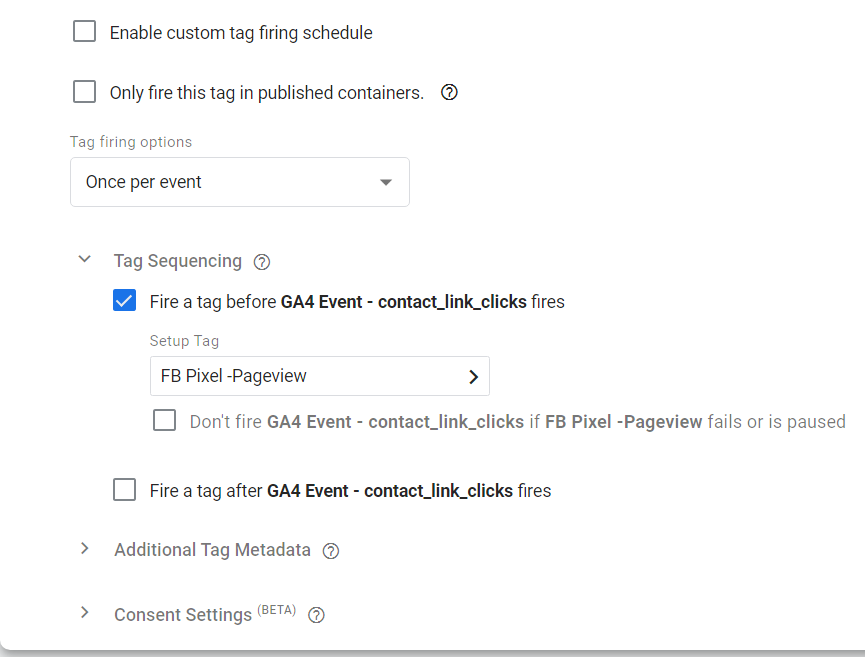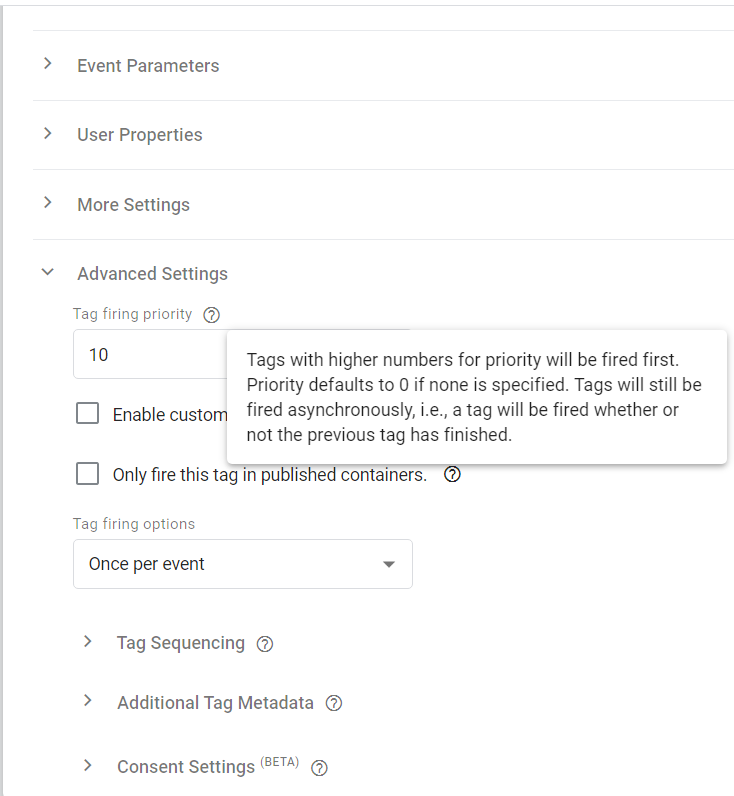Data tracking and analytics play a crucial role in gaining insights and optimizing online performance. Google Tag Manager (GTM) is a powerful tool that allows marketers and digital analysts to manage various tracking tags without the need for manual code updates. Two important tags of GTM that control the firing order of tags are tag priority and tag sequencing. While they may seem similar at first glance, they have distinct differences in how they function and can impact the tracking and analytics setup on a website.
Tag Priority
In simple terms, firing the tags in the right order. Tag priority in GTM determines the relative importance of tags when there are conflicts between multiple tags that need to fire at the same time. GTM assigns a priority value to each tag, with a higher value indicating a higher priority. Tags with higher priority values will fire before tags with lower priority values. This means that if there are two or more tags that have triggers set to fire simultaneously, the tag with the higher priority value will fire first, followed by the lower priority tags.
The tag priority feature in GTM is particularly useful in scenarios where the firing order of tags is critical to the correct functioning of tracking and analytics. For example, if you have a tag that sends data to a third-party analytics tool and another tag that sends data to a marketing automation tool, you may want to ensure that the analytics tag fires before the marketing automation tag to capture accurate data for analysis. By setting the appropriate priority values for these tags, you can ensure that they fire in the desired order and avoid any conflicts that may arise due to simultaneous firing.

Tag Sequencing
It manages the dependencies between the tags. Tag sequencing in GTM allows you to specify the order in which tags fire based on their dependencies. Tags can be configured to fire only after certain other tags have fired. This is particularly useful when you have tags that require data from other tags to be available before they can function correctly. For example, you may have a tag that collects user information and another tag that sends that information to a third-party CRM system. To ensure that the CRM tag fires only after the user information has been collected, you can use the tag sequencing feature in GTM to specify that the CRM tag should fire only after the user information tag has fired. You can specify which tags should fire before or after a particular trigger, and you can even set up multiple levels of sequencing to ensure that tags fire in the desired order based on their dependencies.
Use case scenario
Both tag priority and tag sequencing in GTM offer flexibility in managing the firing order of tags, but they are suited for different use cases. Tag priority is ideal when you have multiple tags that need to fire at the same time, and you want to prioritize their firing order based on their importance. For example, if you have tags for analytics, advertising, and customer support, and you want to ensure that the analytics tag fires first to capture data accurately, you can assign a higher priority value to the analytics tag. This can be done by simply adjusting the priority value in GTM, and the higher priority tag will fire first, followed by the lower priority tags.
On the other hand, tag sequencing is ideal when you have tags that depend on the firing of other tags to function correctly. For example, if you have a tag that sends data to a third-party tool, but it relies on another tag to collect the necessary data, you can use tag sequencing to specify that the dependent tag should fire.
Google Tag Manager help and support
We are here to help you with all your Google Analytics and GTM needs. Our team can get you up and running in no time and also train you and your team to save you a lot of time so that you can focus on driving the business outcomes rather than configuring Google Analytics 4.
Consulting - Reach out to us for more details.

